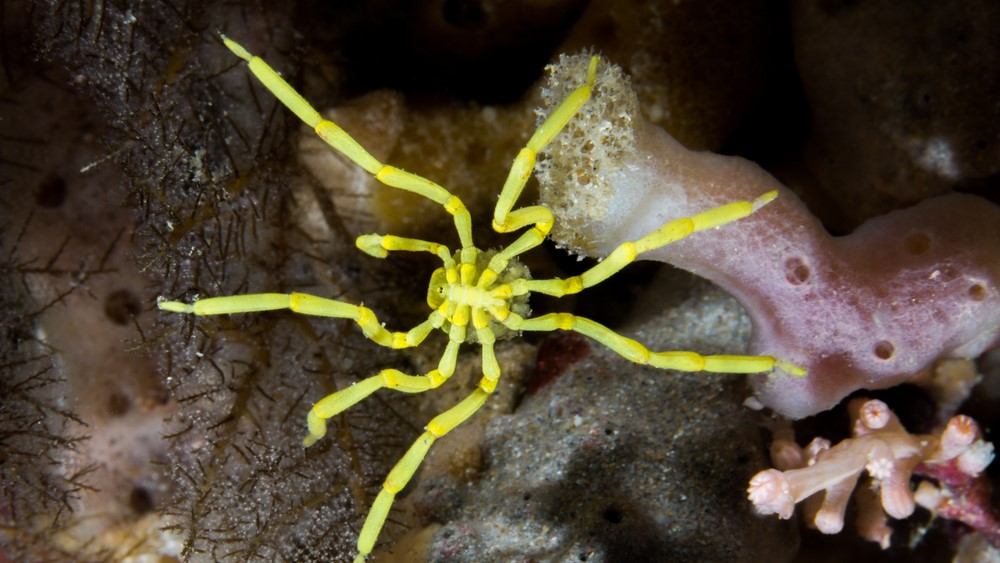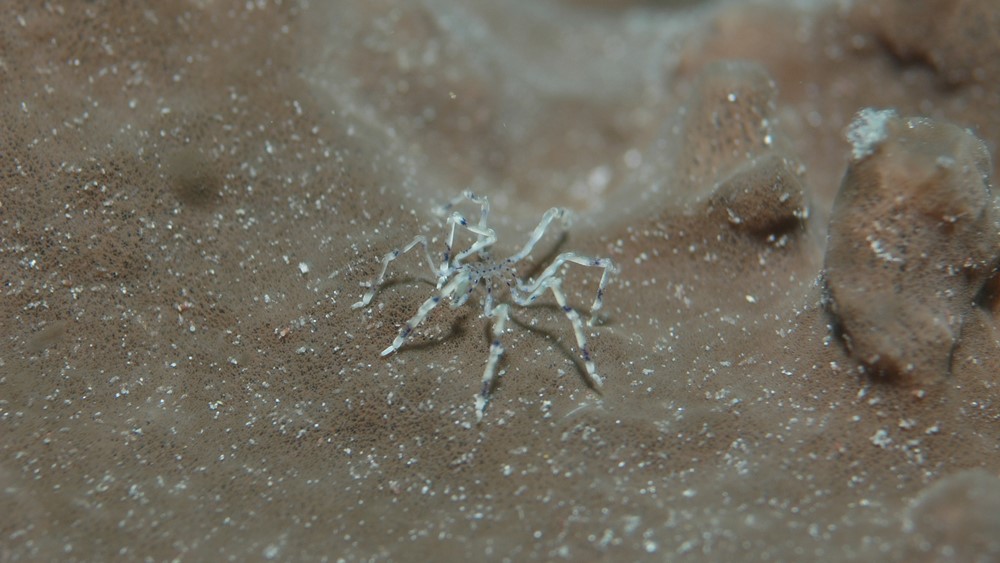Sea spiders can regrow their anuses, scientists discover
In a new study, some juvenile sea spiders were able to regrow amputated body parts, which was previously assumed to be impossible in these marine arthropods.

Sea spiders possess a remarkable, previously unknown ability: They can regrow their rear ends.
In a series of experiments, scientists discovered that juveniles from the sea spider species Pycnogonum litorale were able to fully regenerate a number of amputated body parts from their lower body, including hind limbs, parts of their guts, reproductive organs and even their anuses.
Sea spiders, which belong to the class Pycnogonida, are a group of around 1,300 marine arthropods with eight legs. While they look similar to terrestrial spiders they are only very distantly related to them. Other arthropods, such as spiders, centipedes and crabs, can also regenerate body parts, enabling them to escape predators that have taken a bite out of them. However, it had long been assumed that sea spiders didn't possess this ability because scientists had never observed the animals doing it, and because sea spiders have evolved hard exoskeletons to protect them from predators, which suggested they might not need any other form of defense.
In a new study, published Jan. 23 in the journal Evolution, researchers tested this assumption by amputating body parts from 23 juvenile and 23 adult P. litorale sea spiders. The adults were unable to regenerate any of the lost body parts, but surprisingly a majority of the juveniles eventually regrew the missing parts.
"We were the first to show that this is possible," Gerhard Scholtz, a zoologist at the Humboldt University of Berlin in Germany, told French news agency AFP. "Nobody had expected this."
Related: 10 bizarre deep sea creatures found in 2022
During the experiments, the sea spiders had varying parts of their posterior sections removed, such as their back legs, hindgut, anus, various muscle regions and reproductive organs, which include gonoducts in females and gonopores in males.
Sign up for the Live Science daily newsletter now
Get the world’s most fascinating discoveries delivered straight to your inbox.
The adults were unable to regenerate the lost body parts and most died from their injuries, although a couple of individuals that sustained less-extensive damage were able to survive for up to two years after the experiments. However, 16 juveniles survived their amputations and 14 were able to fully regrow their lost body parts, although some individuals that had all four rear legs removed only regrew two replacement legs.
The adults' inability to regrow lost body parts is likely why the juveniles' regenerative skills have gone unnoticed until now, researchers noted in the paper.

The team now wants to discover the exact mechanism that triggers the regeneration in sea spiders and compare it with other arthropods' regenerative abilities.
"We can try to find out on the cellular level and the molecular level what initiates the regeneration," Scholtz said. It is possible that it involves stem cells, or undifferentiated cells that can transform into any other type of cell, he added.
Related: Could humans ever regenerate a limb?
While this is the first time sea spiders' regenerative powers have been documented, scientists have observed more extreme versions of regeneration in other animal groups.
In March 2021, researchers serendipitously discovered that photosynthetic sea slugs (Elysia cf. marginata) could deliberately decapitate themselves and regrow an entirely new body from their severed heads, with some individuals performing the trick twice in their lifetime. In September 2022, another team revealed how axolotls (Ambystoma mexicanum) — aquatic salamanders that were already known to regenerate their limbs, heart and spinal cord — can regenerate damaged parts of their brain.
Studying the regeneration abilities of arthropods and other animals could one day lead to a breakthrough in regrowing lost human body parts, the team wrote in the new study.
"In the end, maybe the mechanisms we detect in arthropods may help medical treatments of limb loss or finger loss and so on in humans," Scholtz said. "This is always the hope."

Harry is a U.K.-based senior staff writer at Live Science. He studied marine biology at the University of Exeter before training to become a journalist. He covers a wide range of topics including space exploration, planetary science, space weather, climate change, animal behavior and paleontology. His recent work on the solar maximum won "best space submission" at the 2024 Aerospace Media Awards and was shortlisted in the "top scoop" category at the NCTJ Awards for Excellence in 2023. He also writes Live Science's weekly Earth from space series.










